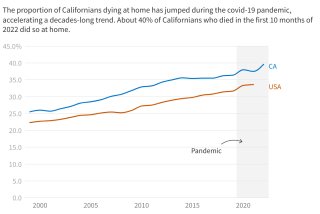Doctors’ House Calls Decline; Training Cited
- Share via
House calls are disappearing in the United States in part because doctors have become dependent on modern medical technology they can’t carry in their black bags, researchers say.
An analysis of Medicare claims in 1993 found that fewer than 1% of elderly patients received house calls. Most of those patients were very sick or dying, according to the study in today’s New England Journal of Medicine.
The main reasons for the decline are low Medicare payments for house calls and the failure of medical schools to train students in low-tech diagnosis, such as listening to a patient’s breathing with a stethoscope, said the study’s lead author, Dr. Gregg Meyer of the Uniformed Services University of the Health Sciences in Bethesda, Md.
In 1993, Medicare paid doctors an average of $87 per home visit--$3 more than for an office visit, the study found.
Medicare reimbursement has improved. Now doctors get about $20 more than for an office visit, but that still does not cover the additional time and travel involved, Meyer said.
Even with higher Medicare payments, the number of home visits by doctors continues to decline, from 1.6 million in 1988 to 984,000 in 1996.
In part, that is because younger doctors are trained to rely more heavily on laboratory medical tests, said Dr. Thomas Cullen, a 60-year-old general surgeon in Gilford, N.H., who was not involved with the study.
“Not many of them are prepared to go to the home of an elderly patient and listen to her chest and say, ‘I think she’s developing pneumonia,’ and prescribe antibiotics without the backup of a chest X-ray,” said Cullen, who still makes house calls.
In an accompanying editorial, Dr. Edward Campion, a deputy editor of the journal, called for medical schools to resume training young doctors in how to make house calls.
More to Read
Sign up for Essential California
The most important California stories and recommendations in your inbox every morning.
You may occasionally receive promotional content from the Los Angeles Times.













